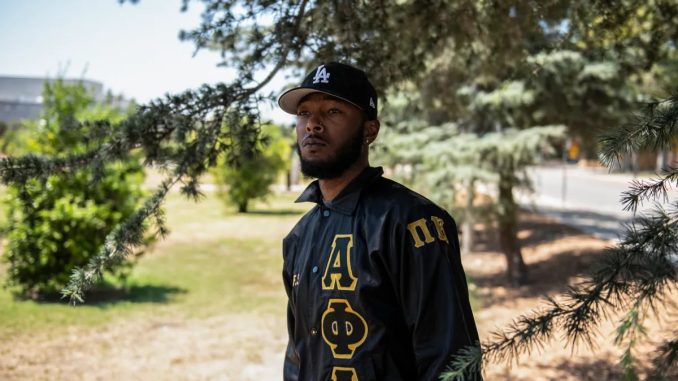
By Mikhail Zinshteyn, Michaella Huck and Julie Watts for CalMatters
CalMatters is an independent public journalism venture covering California state politics and government. For more info, visit calmatters.org.
“A lot of people would tell you to get to college,” said Cal State Northridge senior Christopher Carter, “but the hardest part is staying in college.”
Carter speaks from experience: He arrived at school as a business major, and discovered he was one of only a few Black students in his classes. Math had never been his strong suit, and he failed his introductory statistics class twice. Quarantining during the pandemic added more stress.
He sought help from academic advisors, but felt they couldn’t understand his background and experiences. Whenever he tried to see one of Northridge’s three Black mental health counselors, he said, they didn’t have available appointments.
“I feel like I’m alone on campus,” Carter said. “You know, I don’t see those counselors who look like me, to where I’m like, okay, I’m comfortable here, you know?”
Carter found his niche when he joined Alpha Phi Alpha, a Black fraternity, and is now on track to graduate in May. But he and other Black students and scholars told CalMatters the country’s largest public university system needs to do more to support them at a time when the system’s six-year Black graduation rate is just 50 percent, compared with 63 percent overall.
As CalMatters previously reported, the Cal State’s Graduation 2025 campaign compares the graduation rates of two groups. One is “underrepresented minorities”—a group comprising Black, Latino and Native American students. The other group includes everyone else, such as Asian and white students, which Cal State calls “non-underrepresented minority” students. But that formula obscures even wider gaps between Black students specifically and their “non-underrepresented” peers.
While the system has seen graduation rates improve for all student groups under the graduation initiative, backed by more than $400 million in ongoing state support, the achievement gap between Black students and non-underrepresented students has remained unchanged for more than a decade, a 20-point difference.
A key consequence of that formula is that it makes the struggles of Black students—a historically marginalized group who make up only 4 percent of the Cal State student body—invisible in the accountability data. Under the system’s official formula, equity gaps could almost completely close even if the grad rates of Black students continue to dramatically trail that of their peers. Students and experts identified a lack of tenured Black faculty role models and inconsistent support for campus Black resource centers that offer a sense of community and belonging as barriers to success. In some cases, financial woes and other life responsibilities can make the path to graduation harder, they said. Also in short supply: mental health and other professionals who understand the unique psychological struggles of Black students, who often are attending universities far from home and in communities that have few Black people. Six campuses had no Black employees in therapist roles last year, according to the faculty union that also represents mental health counselors. And though the share of Black professors is similar to the share of Black students, some scholars say that’s not enough.
Feeling out of place
“The CSUs just really have not done a proper job of providing the educational supports that Black students need,” said Lesa Johnson, a Black sociology professor who has chronicled reported instances of anti-Blackness at Chico State.
Universities also send a message to Black students and faculty with the kind of programming and research they choose to support — or not, Johnson said.
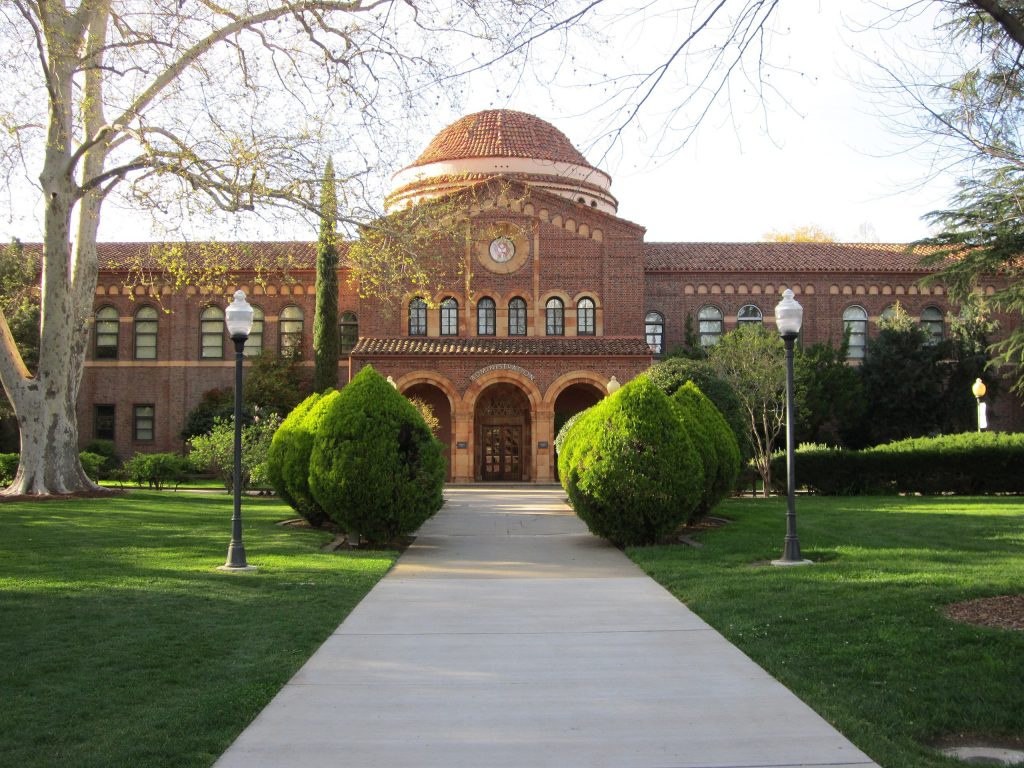
“Many Black people come into academia wanting to ‘be the change we want to see in the world,’ and so we direct our studies and our research and our service toward that change,” Johnson said. “When the university does not support research and services that involve that change, then the university is basically saying they will not support us, they only want our Black skin color, they only want to show us in the pictures, but they want us quiet.”
Johnson is working on a paper detailing other microaggressions Black students report experiencing at Chico State, such as a white professor who made a hurtful joke that a Black student not shoot a weapon when they raised their hand in class. But she’ll be finishing that paper from afar. Despite an offer of a raise and tenure, Johnson left Chico State to start a tenured position in Illinois this fall. “It was definitely the anti-Blackness,” she said. “I had had enough.”
At some Cal State campuses, there is simply not a critical mass of Black students to create a sense of community. That tiny population is one reason CSU Channel Islands has the widest gap between Black students and their non-underrepresented peers, said campus provost Mitch Avila. CSU Channel Islands enrolls just 121 undergraduate and graduate Black students—second lowest in the system. The campus is also one of 11 at which graduation rates for Black students who started as freshmen have fallen in the past four years. The others: Chico State, Dominguez Hills, Fresno State, Humboldt, Pomona, San Bernardino, San Francisco State, San Luis Obispo, San Marcos and Sonoma State.
Proposition 209
One way to boost graduation would be to specifically target Black students with extra tutoring, counseling and other approaches that research suggests improves graduation rates.
But California voters—twice—said colleges can’t do that. In 1996, voters passed Proposition 209 and in 2020 they struck down a measure to overturn the proposition.
While the state constitutional amendment ended the use of race as a factor in public college admissions in California, it also made it illegal to use state or federal funds exclusively for any single racial or ethnic group.
In theory, the federal government could require the Cal State system to spend more money specifically on resources for Black students given the wide gaps in graduation rates, but such federal action rarely happens, said Thomas A. Saenz, president and general counsel of the Mexican American Legal Defense and Educational Fund, a civil rights legal group that has argued before the U.S. Supreme Court.
Scholars of racism who spoke with CalMatters are frustrated that Proposition 209 requires a race-neutral answer to a race-specific problem. But they also say there are other ways around the amendment. A public college or university in California can target a racial or ethnic group for a program, as long as other groups aren’t excluded, Saenz said. If campus data show that Black students are not getting access to counseling, “you can fix that, that’s a race-neutral fix,” he said, even if that means hiring more culturally competent counselors.
UCLA education professor Tyrone Howard, who is Black, holds some meetings with students at his campus’ new Black student resource center rather than at his office. Doing that or hosting workshops at the center “becomes a draw” to Black students in search of resources they may not find elsewhere on campus, he said. It’s a script he thinks more campuses should follow, including the Cal States. Once he comes back from sabbatical next fall, he’ll hold all his office hours at the center, he said.
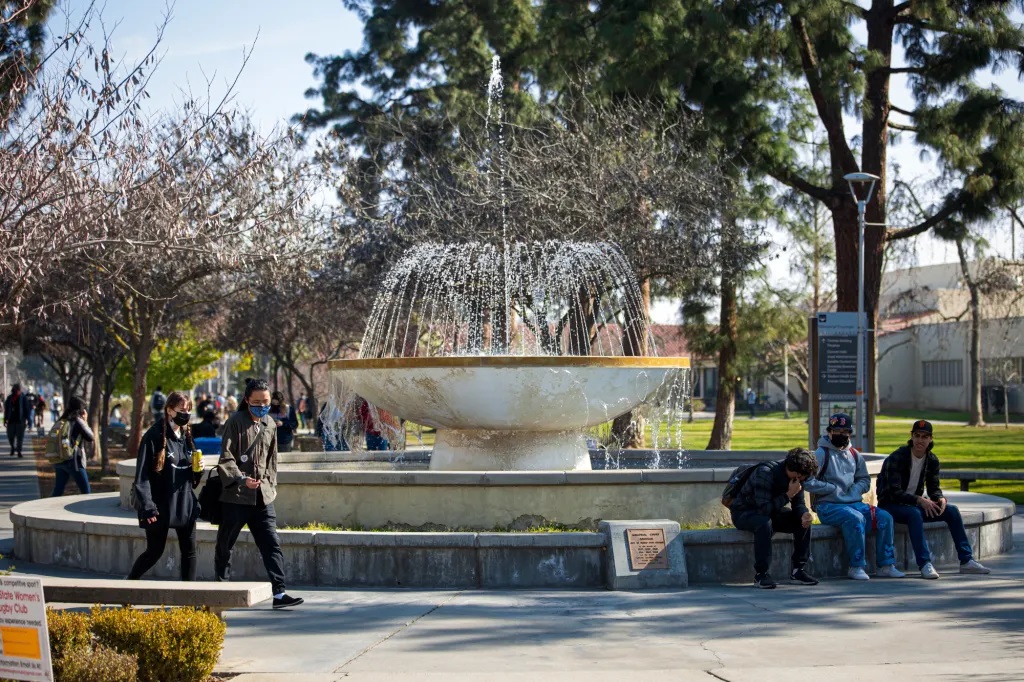
But Howard added that the centers have to be “Black in name”—which is permitted under Proposition 209, as long as it’s not exclusive to any student based on race or ethnicity. Doing this signals that “aiding, assisting Black students is the primary goal,” he said. These centers can also be a way to bring academic and mental health services directly to Black students, which can be a benefit to students who feel alienated by more traditional campus spaces.
What Cal State is doing
About two thirds of Cal State campuses have physical locations dedicated by name to Black students, such as a Black resource center. Those that do not are Bakersfield, Channel Islands, Chico State, Fresno State, Maritime Academy, Monterey Bay, Sonoma State and Stanislaus State.
Every campus should have these centers, said Bob Rucker, the former director of San Jose State’s journalism school.
“African Americans are coming to you because they value what they’ve read and learned about your program,” Rucker said. “Now meet them halfway. Do the extra homework—chairs, directors, and deans—and find a way.”
Among the campuses with such centers, there is wide variation in their size and services. Some, such as those at Fullerton, Sacramento State and San Diego State, offer academic or mental health counseling at those Black campus centers. Cal State Dominguez Hills has one professor who hosts some office hours at the center.
Whether simply having a Black resource center leads to lower equity gaps is unclear. For example, Northridge, the campus with the largest center, has among the deepest equity gaps between Black students and non-underrepresented groups—a difference of 22 percentage points in 2021.
Not all Black students visit these centers, Howard said, so training other academic support personnel in anti-racism is also important.
As for the limitations of Cal State’s Graduation 2025 equity goals, some university leaders said they’re aware of the problem.
After reading CalMatters’ reporting in July, Cal State trustee Julia López called for the university to report specific graduation rates for Black students, Native American students and other ethnicities.
In an interview, the system’s top official for academic matters, Sylvia A. Alva, called using only the underrepresented-minority-students metric to track progress towards equity goals “very crude.”
But Alva said the system is tied to the underrepresented-minority metric until 2025 because it would be unfair to change the goalposts partway through the effort. Any decision would have to be made through the university’s shared governance model, she said, including input from the 23 campuses.
Alva wouldn’t commit to a metric after 2025 that measures the system’s ability to close equity gaps among specific racial and ethnic groups.
“I don’t believe that we would be well served as a state to pit any group against another,” she said. Instead, she proposed a model that measures whether a campus is below or above its graduation target for certain student groups.
“We are committed to doing everything we can to close those equity gaps,” she said. She wouldn’t endorse an accountability goal for the system to close those equity gaps among racial groups.
Following CalMatters’ reporting, Gov. Gavin Newsom’s administration is also reconsidering this “crude” equity gap metric. Newsom in May unveiled a compact with the Cal State system promising ongoing increases in state funding if the system reaches certain goals, including closing the graduation gap between underrepresented and non-underrepresented minorities.
Now his office is saying more detailed data will be part of the oversight.
“Public institutions should be guided by data that reflects lived reality,” said a governor’s office spokesperson in a written statement to CalMatters. “In partnership with the UC, CSU, and California Community Colleges, the administration will use all available data—disaggregated race and ethnicity data alongside URM (underrepresented-minority) metrics—to serve as the basis for reporting, discussion, and decision-making.”
Newsom’s office didn’t provide a timeline for whether, and when, the compact’s official language would reflect that position.
Finding solutions
Support targeted to Black students made the difference for Tyrone Carter, who earned bachelor’s degrees in Africana Studies and psychology from Cal State Northridge at the age of 53.
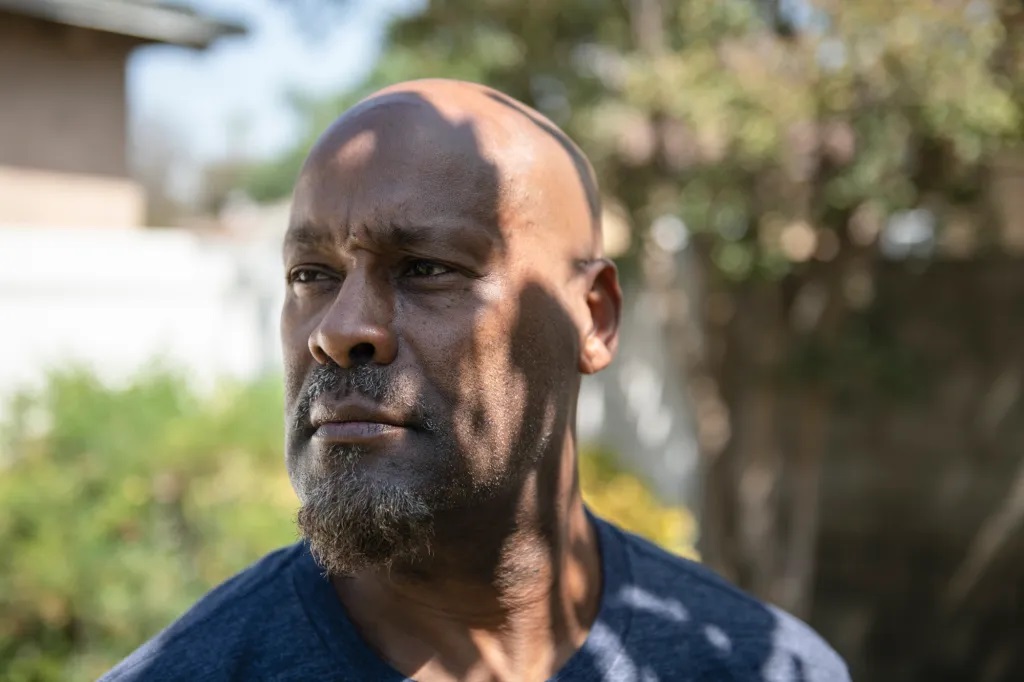
After his release from prison in 2016, he enrolled in community college but felt unable to relate to his classmates and professors or ask them for help. But then he found the Black Scholars Program at L.A. Valley College. The faculty and staff there introduced him to a professor in Cal State Northridge’s Minority Male Mentoring program. They helped him apply to transfer to the four-year university, and the Northridge professor was a vital resource at his new campus.
“When I joined the Black Scholars Program, I felt that I was able to be my true authentic self,” said Tyrone Carter, who just completed a master’s degree at UCLA. “And I mean all of myself.”
Other solutions campuses are trying include hiring professors who have a track record of teaching culturally relevant content, educating a diverse group of students or researching the role race plays in society—an approach that could yield more Black faculty without running afoul of Proposition 209.
Channel Islands will have four new Black professors after conducting a “cluster hire” that sought academics with experience applying concepts of Black identity to their subjects. Next fall, the campus will debut its first major in Africana Studies. Avila, the provost, also wants to create a Black resource center in the next few years and ensure that school academic and mental counselors are stationed at the center several times a week.
Some campus interventions meant to help all struggling students are also showing signs of progress.
Internal Cal State data show that students who fail a class early in their academic tenure are much less likely to graduate. At San Marcos last fall, about 56 percent of Black freshmen failed at least one course in their first semester, up from 40 percent in fall 2019. That’s part of a larger trend: More than a third of San Marcos’s 2,100 freshmen were on academic probation after their first semester last year, meaning they had less than a 2.0 grade-point average.
So the campus sought to solve that retention whirlpool with a one-unit academic resilience class designed to teach students on academic probation how to study more effectively and seek academic help on campus, and have them reflect on why they struggled academically.
Early signs suggest the course is having an impact. Over three years, the retention rate for Black students who took the class was 13 percentage points higher than for Black students who didn’t take the class. It was slightly higher for all students—a 15 percentage point bump.
“The whole CSU has to try and be an institution where academic recovery is possible,” said Adam Petersen, director of strategic initiatives for academic success at San Marcos. As long as students are kicked out for low GPAs, he said, “I think it’s gonna be hard for us to meet any of our equity goals.”
Closing the gap
Just one Cal State campus, San Diego State, has effectively closed its graduation rate gap between underrepresented and non-underrepresented freshmen students, as well as between Black students and non-underrepresented freshmen students. And though it’s among the most selective Cal State campuses, Cal Poly San Luis Obispo, another highly selective Cal State, has far wider gaps.
San Diego State takes pains to create a welcoming environment for Black students from the moment they express an interest in attending through their final year on the campus, said J. Luke Wood, vice president of student affairs at the university and a scholar on education and race.
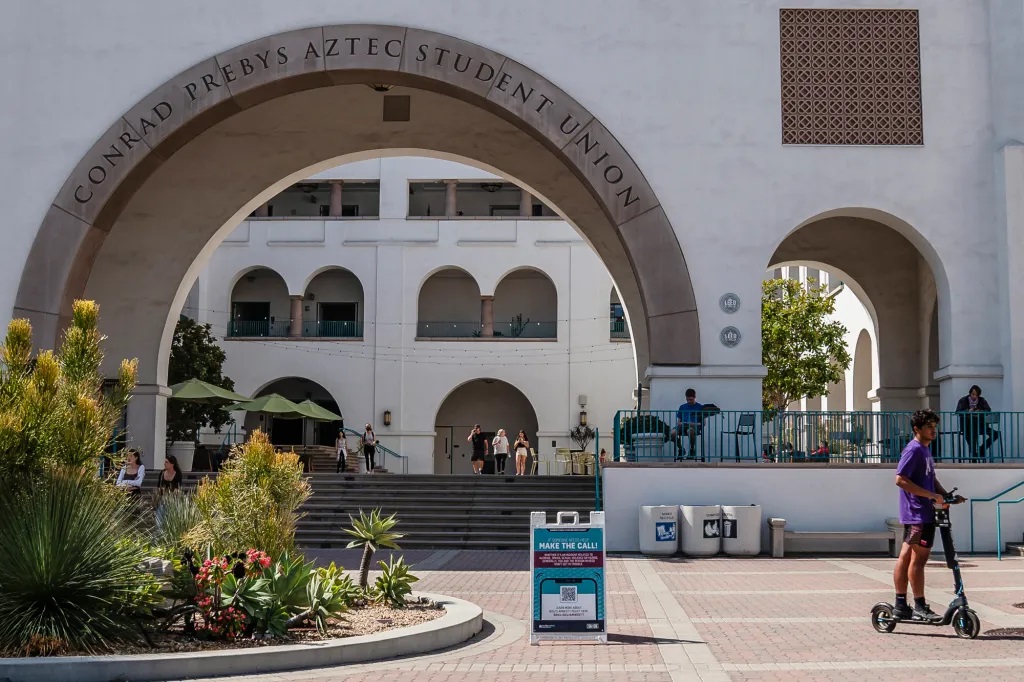
It starts with a campus tour for interested students that focuses on significant Black history milestones on campus, such as where Martin Luther King Jr. spoke when he visited the campus. Once students are admitted and deciding whether to attend, they and their parents are invited to spend a night on campus, where they get early exposure to the school’s Black resource center, meet student leaders and learn about financial aid. About 70 students take part annually.
“We want [Black students] to come onto campus and to see themselves everywhere they go, to say that ‘this is a place for me’,” Wood said.
Once they’re freshmen, students can join the Henrietta Goodwin Scholars Program for first- and second-year students, which offers a weekly seminar on study skills, academic coaching, extra tutoring in courses with high fail rates and connections to other Black scholars on campus. About 150 students take part in this.
Another service for students approaching their final few semesters at college prepares them for the workforce, with activities such as meeting with Black executives, landing internships and “understanding of systemic oppression and bias as ongoing challenges.”
Though the programs focus on the Black student experience, they’re open to all.
Between 2016 and 2022, the university’s Black tenure-line faculty ranks grew from 25 to 42 employees. The campus has also gone on a general hiring spree that benefits all students, bringing on 29 more academic advisors since the COVID-19 pandemic and hiring enough therapists to bring its student-therapist ratio down from 1,900 to 1 three years ago to 1,400 to 1 most recently. College students who get more advising graduate at higher rates, according to a recent “what works” guide for colleges published by the U.S. Department of Education.
Beyond ongoing staffing and programs, Wood noted a low-cost effort that he says students appreciate. A team of eight students and two campus staff call or text students with lower grades to check in on their mood and academic needs weekly or monthly.
In response to Minneapolis police officers murdering George Floyd in 2020, the Black Resource Center led a drive to call all Black students to ask if they were OK or needed support.
Other campuses may say all these actions “are things we’re thinking about,” but San Diego State actually did the work, Wood said.
“And I think that’s one of the reasons we’re seeing those equity gaps close.”

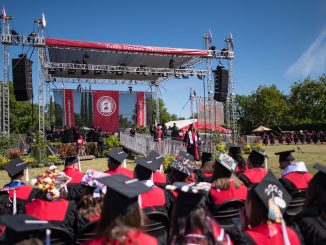

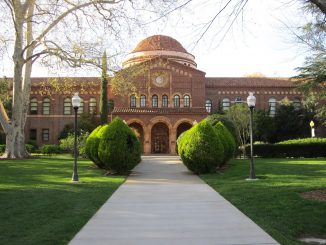
Be the first to comment